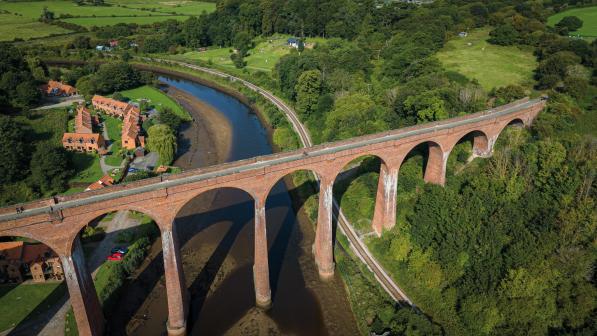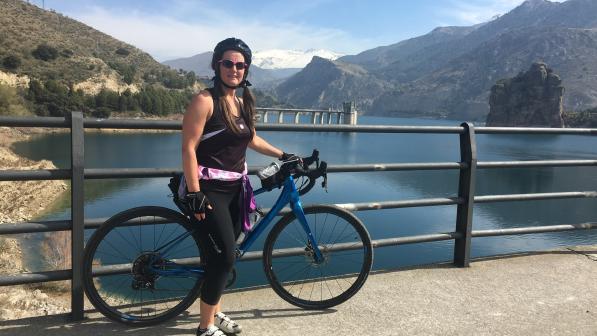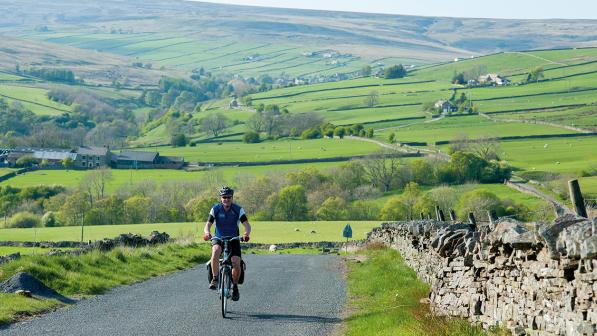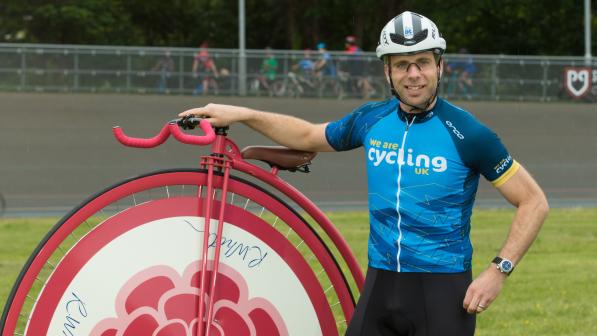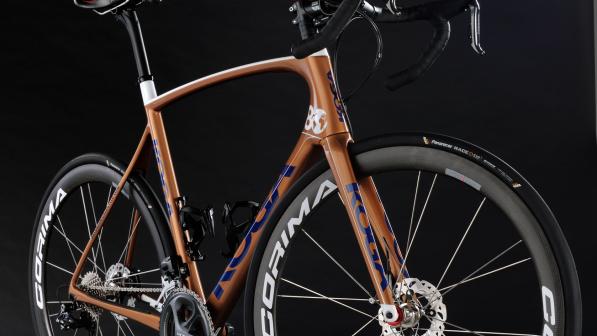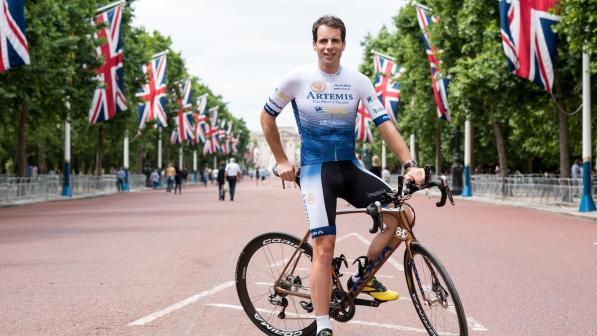Mark Beaumont's North Coast 500

In 1988, The Proclaimers penned Scotland’s alternative national anthem: I’m Gonna Be (500 miles). Twenty-seven years later, the North Highland Initiative created a 500-mile route around Scotland’s most northerly coastal roads. Always one for a challenge, but unwilling to walk 500 miles, I set about trying to cycle the route non-stop, laying down a time-to-beat on Scotland’s answer to Route 66.
You might think that America’s Route 66 has existed for generations. Yet while the route from Chicago to California is indeed old, it only became ‘Historic Route 66’ after it was removed from the US Highway System in 1985. It was then marketed to tourists. The roads around Scotland’s North Highland coast are older still. The North Coast 500 route has been ‘created’ and marketed in the hope it too becomes a pilgrimage.
Most Scots and visitors alike are guilty of exploring only as far north as Inverness, if they escape the bright lights of Edinburgh and Glasgow at all. And yet Inverness is the gateway to some of the best roads, beaches and scenery in Britain.
Early start from Inverness
6am, Monday 10 August, Inverness Castle: I chatted nervously to the local press, who had fallen out of bed early to witness the start of this madness. I had gone to bed at 8pm, needing every ounce of rest. Then I stared at the ceiling until 1am, terrified.
My entourage included three cars and a motorbike, mainly for the film team. This was a long way from my unsupported rides down Africa, the Americas and around the world. The trip itself was very different too. I’m used to multi-day, multi-week and multi-month rides. I had never attempted 500 miles non-stop. Within a mile, we all took a wrong turn. It was not a promising start.
I was going clockwise, motivated to get the fiercely hilly west coast out of the way during the daylight and whilst I was fresh. And I was soon feeling optimistic – the first 50 miles passed quickly as I started through relatively flat farmland and then alongside the first lochs and forests as I reached the rugged west coast. I mentally multiplied this progress and started dreaming of a sub 35-hour finish.
Alas, just as a marathon is a lot more than twice as hard as a half marathon, riding 500 miles non-stop is many times tougher than ten 50-mile rides!
The Bealach Na Ba
Alongside Lochcarron, the first of the sea lochs, a roadie sped towards me, swung around and fell alongside. Local endurance hard man Alex Glasgow holds the course record for the infamous Applecross Sportive (Bealach Mor) and was the first winner of the legendary Celtman triathlon. But I reminded him straight away that today was not for any Strava KOMs, as I would still be on my bike the following evening. I could tell he was itching for a fast ride, but loyally kept it steady for the next five hours around Wester Ross.
The Bealach Na Ba is the third highest road in Scotland, with a stunning Alpine-style switchback section.
Mark Beaumont
The Bealach Na Ba (Pass of the Cattle) boasts the greatest ascent of any road climb in the UK, rising from sea level to 626 metres over 9.1km. It’s the third highest road in Scotland, with a stunning Alpine-style switchback section, accentuated by the singletrack road. At one point it’s a 20% gradient, but it isn’t as fierce as its reputation; taken steadily, it is a joy to ride. Alex and I chatted our way to the top, swapping recent adventures as the drone buzzed noisily overhead, capturing my favourite climb in Scotland.
The drone wouldn’t fly for long as the weather started rolling in from the Atlantic. The Applecross Peninsula remains constantly undulating, often steep and twisting, and for a few hours we were spoilt with sunshine and views around to the sleepy village of Shieldaig. But as the magnificent, steep-terraced sides of the Torridon Hills came into view, bare sandstone crowned with white quartzite, the skies darkened and a light drizzle started.
"Spare a thought for me," said Alex with a smile, as we reached the Kinlochewe T-junction in the now pouring rain. "I have 40 miles back to my car!"

North in the dreich
I turned left, alone again, and climbed steadily up and over to Gairloch. Sheets of rain fell from a slate-grey sky. I was riding the same bike that I pedalled from Cairo to Cape Town earlier in the year, chosen ahead of my road bikes for its more comfortable geometry. Most of the 439 hours I spent pedalling through Africa were spent on the tri-bars, efficiently spinning along in the same gear. Scotland’s west coast is anything but steady terrain; my average speed was falling as quickly as my sense of humour.
What I hadn’t accounted for was the scale of public support. In every village, and in spite of the weather, locals and tourists alike lined the roadside, cheering me through. The power of social media, and word of mouth out in Britain’s least populated corner, had turned this solo exploit into something brilliantly sociable. ‘GO MARK’ read the homemade signs. Families banged drums made out of bin lids. I stopped and chatted to the first few well-wishers, but soon realised this level of sociability could seriously slow progress. I appreciated every bit of enthusiasm, however; it really helped to keep me going.
A local postman and his teacher wife joined me for about 20 miles, cheerily storytelling about the area and explaining how, as a couple from the Midlands, they ended up falling in love with and moving to these remote parts.
Back in the zone, with high spirits, it was unexpected and annoying to get a front puncture. Stopping in the evening rain, I was immediately tortured by swarming midges. Eager to free myself from them, I rushed the repair and sped on triumphantly. It was short lived: ten minutes later it was flat. A tiny shard of glass was hidden in the tyre and I needed a knife to lever it out.

Ullapool and Durness
Sutherland has 2.2 people per km2, making the Lake District look like a hive of activity with 18.4 and London looking unfathomably packed with over 1,500 people per km2. Its name, meaning Southern Land, is a tad confusing. It’s because this was at one point the lowest reach of the Vikings. The mixture of Celtic and Viking heritage is evident in the mountains that I pedalled past, with names like Ben Loyal, Ben Hope, Stac Pollaidh and Suilven.
This part of Britain was irreversibly changed after the failed Jacobite rebellion of 1745 and the ensuing Highland Clearances. Most people from the previously populated north emigrated to the Antipodes, the Americas, and further south in Scotland to make way for lots of sheep. The entire coastal route around Sutherland and Caithness is scattered with evidence of yesteryear, now mainly vast Highland estates. Pockets of crofting – small-scale farming – remain, such as on the Assynt peninsula around the spectacular Summer Isles.
Ullapool was the biggest town on day one. A tractor there created a five-vehicle rush-hour queue as I stopped briefly to stock up for the night shift. The light faded long before sunset due to the heavy skies. I cycled on, glancing into windows of roadside cottages looking snug and warm. As the hours passed, these windows also went dark and I was left with only the pool of my own headlight.
North of Lochinver, the road tapered once again to a narrow track and I faced some extraordinary terrain. No doubt stunning by day, at 4am in the pouring rain this was the toughest section yet. Reaching Durness, Scotland’s northwest corner, was a huge and long-awaited relief. I guessed wrongly that I would turn east on flatter roads. In fact, the route remains hilly until Thurso. However, by the village of Tongue, dawn had at least brought a break in the weather. After 13 hours of rain, I started to dry out.
John o’ Groats
I had kept my focus very short through the night, not looking beyond the next few hours at a time. Back in the daylight and dry, with the tough stretch behind me, I drifted into the mental doldrums. Staring at the road under my front wheel, hurting deeply, I was unable to think about the 200 miles that still remained. It wasn’t until mid-morning that I managed to shake the slump and pick my speed up again by focusing on the next milestone, John o’ Groats.
The spontaneous support from riders and roadside cheerleaders who started appearing from then onwards certainly helped me again. The rugged west gave way to the calmer east: sea cliffs drop off Dunnet’s Head, mainland Britain’s most northerly point, giving a stark border to the North Sea and a horizon broken only by the outlying islands of Orkney.
Fellow cyclists often started cautiously, suggesting that they didn’t want to hold me back and distract. On the contrary, I reassured them, I wasn’t speeding anywhere, having already pedalled for 24 hours. Moreover, their conversations were a very welcome break from my own thoughts.
John o’ Groats was where I set off on my first serious cycle ride – to Land’s End. I was 15. It was a lovely moment to return 17 years later. I stopped for 15 minutes, my longest stop yet. All downhill now, right?
The last leg
The NC500 has ever-changing scenery, and whilst the road down the east coast is bigger and relatively busier, it has its own beauty. There are ruined castles amidst the rolling farmland, waves crash ashore, and oil-fields dot the seascape. The sea is rarely out of sight on this long leg south to Inverness.
I barely stopped, although the Berrydale climb and subsequent gorges reduced me to a walking pace, climbing out of the saddle. Seeing my heart rate soaring to 160bpm after 34 hours in the saddle was unwelcome. I was digging deep and riding into the unknown. Having completed a number of 24-hour rides, but never over such tough terrain, I was now well into day two.
The final hours were brilliantly sociable, as local roadies took it upon themselves to give me an unbroken chain of support riding. I was deeply grateful, but aware that my conversation was scarce. My every thought was on the road ahead, counting down the miles to Inverness.
After 37 hours 58 minutes, I climbed for the final time to Inverness Castle, with a police escort, to a welcome by the Lord Provost and a good crowd. What a reception, not just at the finale, but also throughout. It was heartwarming stuff and made the daft mission all the more enjoyable. It took a few sleeps to feel recovered, and even longer before I could look at my bike again!
I would strongly advise planning your own ride around Scotland’s beautiful north coast, but take a week and enjoy the views and hospitality. I’m not just saying that to give my record a chance of surviving, as I am sure it won’t take long before someone else has a crack!

Watch the video of Mark's North Coast 500
North Coast 500 from North Coast 500 on Vimeo.
